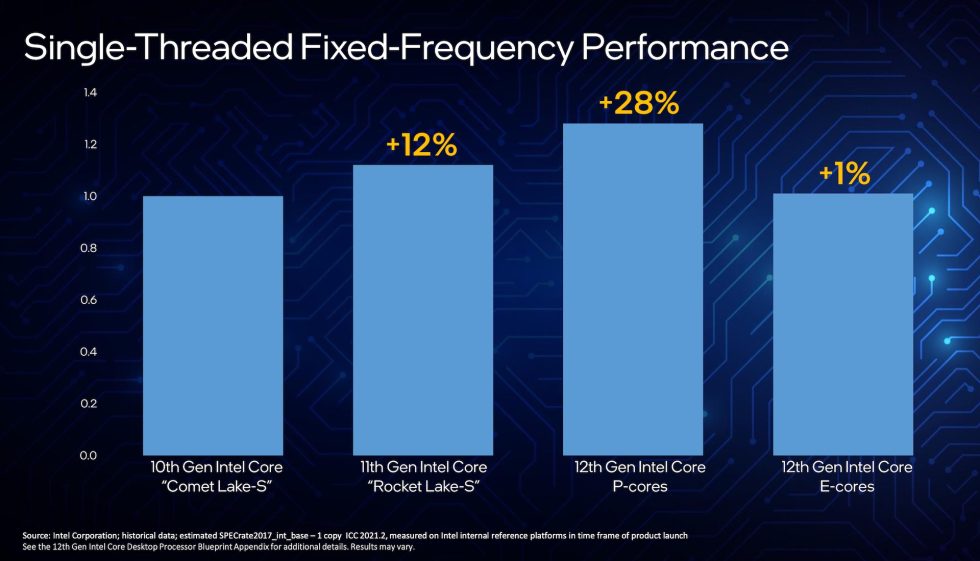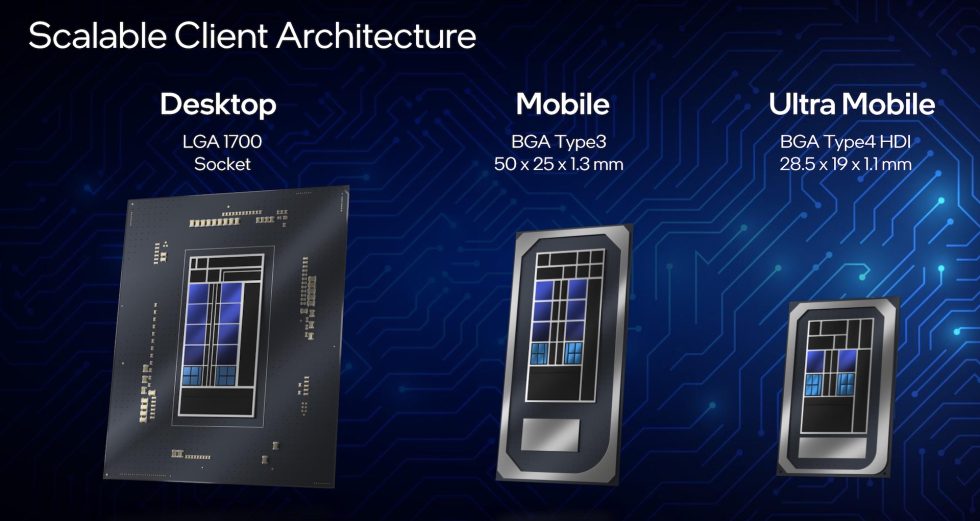

Intel announces 12th-gen Alder Lake CPUs: Our long 14 nm nightmare is over
source link: https://arstechnica.com/gadgets/2021/10/intels-12th-gen-alder-lake-cpus-will-try-to-make-up-for-rocket-lakes-stumbles/
Go to the source link to view the article. You can view the picture content, updated content and better typesetting reading experience. If the link is broken, please click the button below to view the snapshot at that time.

another year, another lake —
Intel announces 12th-gen Alder Lake CPUs: Our long 14 nm nightmare is over
New desktop CPUs include DDR5 RAM support, PCI Express 5.0, and more cores.
Andrew Cunningham - 10/28/2021, 6:00 PM

Intel's 11th-generation desktop processors, codenamed Rocket Lake, didn't impress us much. They were Intel's sixth processor architecture based on some version of Intel's 14 nm manufacturing process and the first not to use an iteration of the venerable Skylake core from 2015.
They did improve performance, usually, by backporting features from newer and faster processor architectures. But when you add features without improving the manufacturing process, you get exactly what Rocket Lake delivered: a processor that is a bit faster but also a lot hotter, with much higher power usage than either the 10th-generation Intel CPUs that preceded them or the AMD Ryzen 5000-series CPUs they compete against.
Now, Intel is attempting a course correction in the form of its 12th-generation core CPUs, codenamed Alder Lake. The first six processors in the lineup are available for preorder now and will be available starting November 4.
The new chips are Intel's first desktop processors (outside of servers) to be manufactured on some version of the company's 10 nm manufacturing, but you won't see "10 nm" in any of Intel's marketing materials or product pages. The process formerly known as "10 nm Enhanced SuperFin" is now called "Intel 7" because the company says that its transistor density will be comparable to 7 nm processes from competing foundries like TSMC and Samsung. Intel announced its updated manufacturing process naming scheme earlier this year.
A new chapter for Intel's desktop CPUs
Alder Lake signals a significant shift in the composition of Intel's processors. The 12th-generation Core chips being announced today all come with a combination of "performance" and "efficient" CPU cores, also called P-cores and E-cores. The P-cores are the successors to the cores used in previous desktop processors, with Hyperthreading support, 1.25MB of dedicated L2 cache per core, and fast single-threaded performance. The E-cores can chip in to help with heavily threaded workloads but are generally meant to handle background tasks, don't support Hyperthreading, and are arranged in four-core clusters with 2MB of shared L2 cache per cluster.
The initial lineup includes three processor options that are being offered with and without integrated graphics, for a total of six processors. The top-end i9-12900K includes eight P-cores and eight E-cores, plus integrated graphics, for $589. The i7-12700K still has eight P-cores but steps down to four E-cores and will run you $409. And the midrange i5-12600K includes six P-cores and four E-cores for $289. To get the price for any of the GPU-less KF variants of the processors, subtract $25.
AdvertisementThe mix of cores means that the ratio of cores to threads is different from what we're accustomed to with typical Intel and AMD CPUs. You get two threads per P-core but only one thread per E-core, which is why the 16-core i9-12900K has 24 threads instead of 32, for instance.

These processors' prices and higher core counts will help Intel compete better with AMD in multithreaded workloads—AMD will sell you a 12-core, 24-thread Ryzen 9 5900X processor for around $560 and a 16-core, 32-thread 5950X for $750. Intel's benchmarks tend to avoid comparing Alder Lake CPUs to these AMD chips in multithreaded tasks, preferring instead to advertise more favorable comparisons to the thermally challenged 8-core, 16-thread i9-11900K. But improved performance from Alder Lake's P-cores and the additional core count from the E-cores should at least help close the gap.
To put the P- and E-cores in context, Intel compared the single-threaded performance of both to 10th-generation Comet Lake cores, the final desktop iteration of Skylake. When running at the same clock speed, a 12th-generation P-core has about 28 percent faster performance than a 10th-generation core, while an E-core is roughly equivalent to a 10th-generation core. Intel says the E-cores can deliver performance that is equal to Skylake while consuming just 40 percent of the power.

This mix of "big" and "little" cores has been common in phones and tablets for a while now, and Apple also uses it in its various M1 chips. But to help the setup function better with desktop operating systems that are accustomed to treating all cores the same way, Intel is using something it calls the "thread director," a hardware-level feature that works with the OS scheduler to direct certain tasks to certain cores based on the workload, power limits, and heat. Intel specifically mentioned that the feature has been made to work well with Windows 11 and that "available features and functionality vary by OS."
Page:
Recommend
About Joyk
Aggregate valuable and interesting links.
Joyk means Joy of geeK